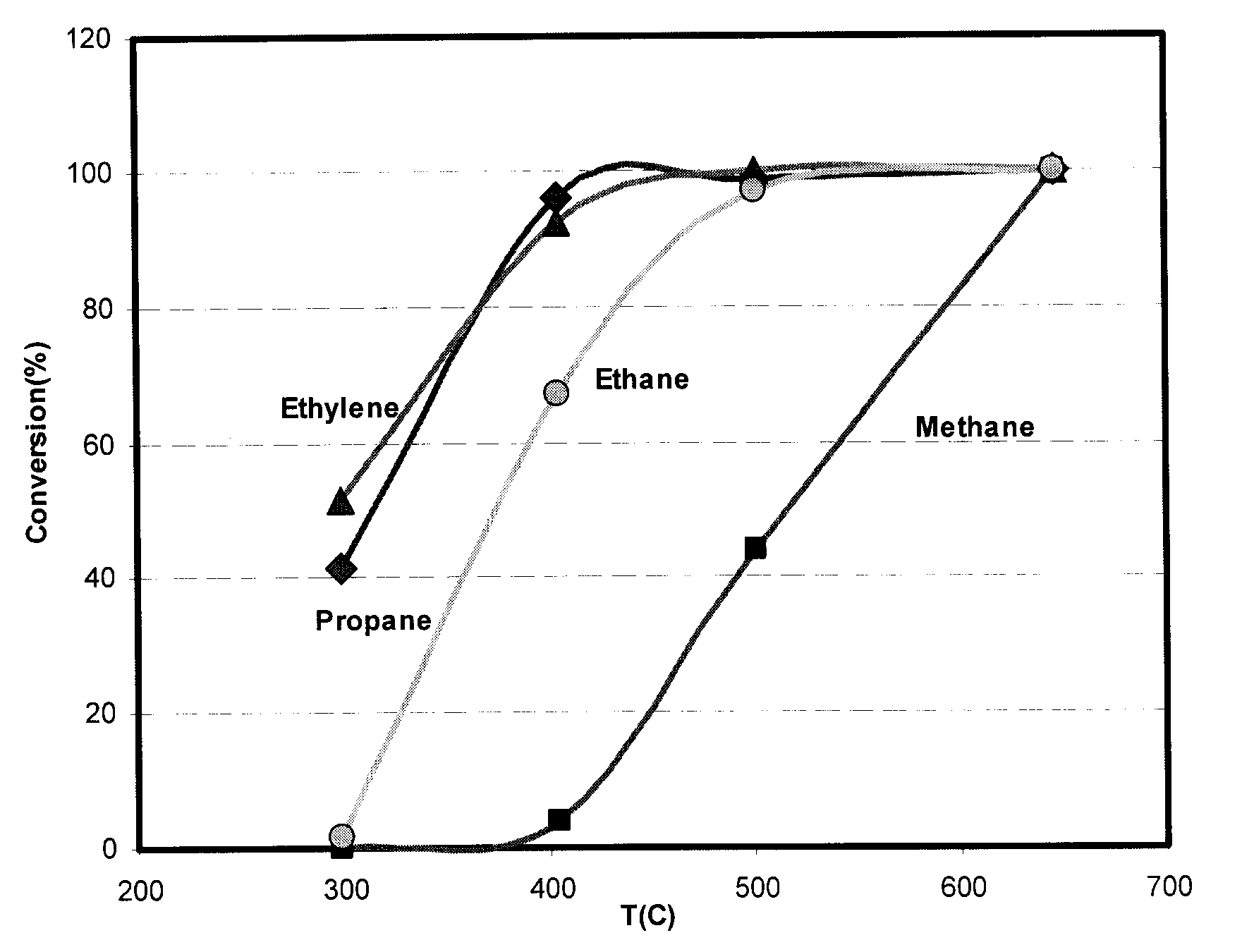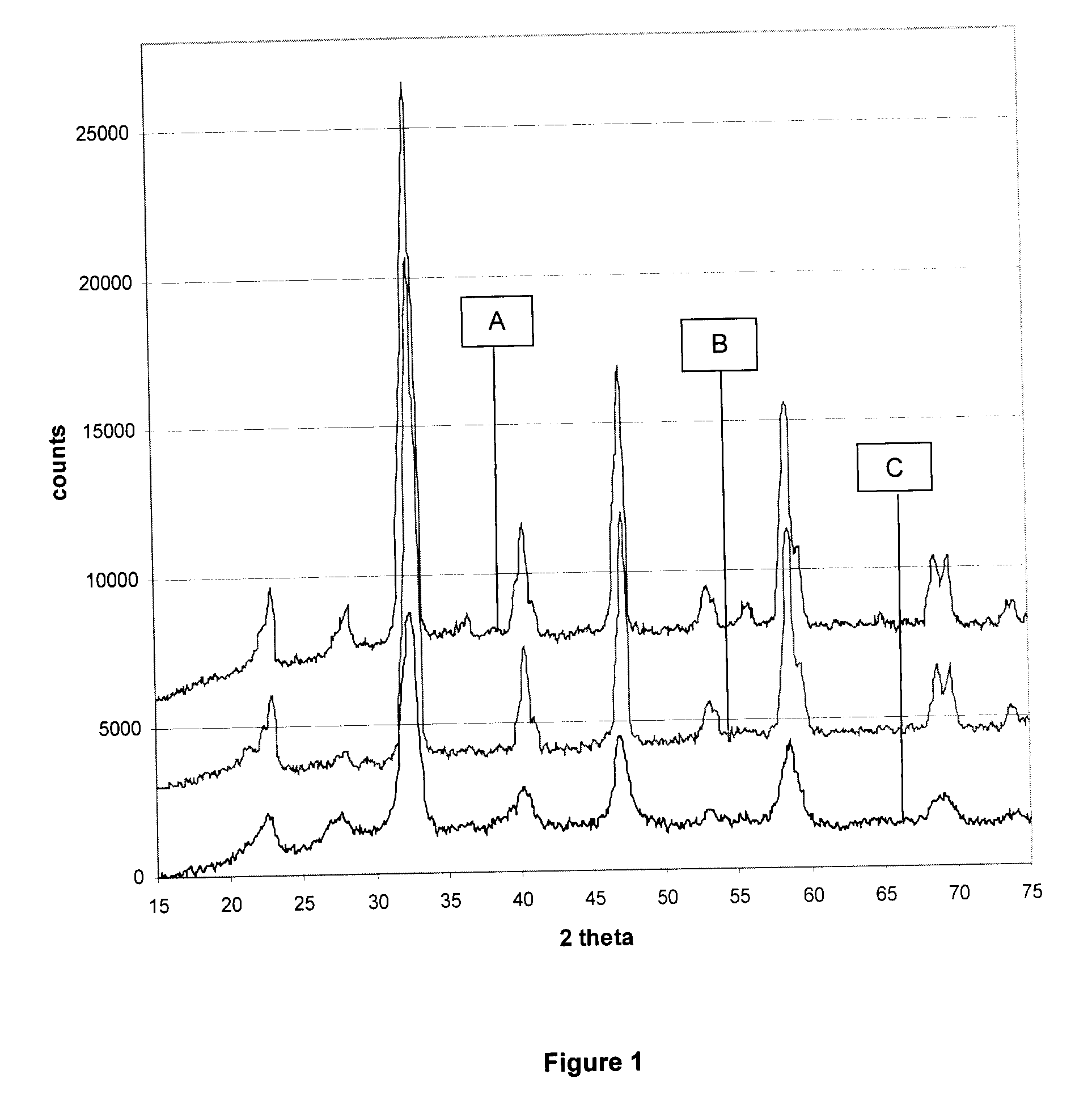Process for Optimizing the Catalytic Activity of a Perovskite-Based Catalyst
a technology of perovskite and catalyst, which is applied in the direction of metal/metal-oxide/metal-hydroxide catalyst, inorganic chemistry, phosphorus compounds, etc., can solve the problems of higher pgm usage, complicated situation, and cost increase, and achieves lower cost and higher performance.
- Summary
- Abstract
- Description
- Claims
- Application Information
AI Technical Summary
Benefits of technology
Problems solved by technology
Method used
Image
Examples
example 1
[0056]In this example the XRD diffraction pattern of three samples are compared.
Sample A (Ceramic Method):
[0057]La0.9Ce0.1CoO3 perovskite obtained by ceramic method where the stoichiometric amounts of La2O3, CeO2, Co3O4 were pre-mixed in a vertical attritor for 1 hour and the resulting mixture was subjected to a heat treatment at 1000° C. under air for 3 hours to obtain the perovskite structure.
Sample B (Citrate Method):
[0058]La0.9Ce0.1CoO3 perovskite obtained by citrate method. The co-precipitated mixture was dried and calcined at 730° C. for 12 hours to obtain the perovskite structure.
Sample C (Present Invention):
[0059]La0.9Ce0.1CoO3 perovskite was obtained by the same ceramic method as for Sample A. The perovskite obtained was then subjected to high energy horizontal ball milling for 3 hours. The horizontal high energy ball mill was operating at 500 rpm with a ball to powder ratio of 8:3. The resulting powder was then subjected to a further wet grinding in a vertical attritor for...
example 2
[0062]In this example the TPDO (temperature programmed desorption of oxygen) pattern of three samples according to Example 1 are compared (FIG. 2).
example 3
[0063]In this example the catalytic activity of three samples according to Example 1 are compared at different temperatures (FIG. 3). The samples were tested under a gas stream with 50 000 h−1 space velocity. The composition of gas stream was:
C3H6: 200 ppmCO:2000 ppmO2:20%H2O:10%Inert gas:Balance
PUM
| Property | Measurement | Unit |
|---|---|---|
| Temperature | aaaaa | aaaaa |
| Temperature | aaaaa | aaaaa |
| Temperature | aaaaa | aaaaa |
Abstract
Description
Claims
Application Information
 Login to View More
Login to View More - R&D
- Intellectual Property
- Life Sciences
- Materials
- Tech Scout
- Unparalleled Data Quality
- Higher Quality Content
- 60% Fewer Hallucinations
Browse by: Latest US Patents, China's latest patents, Technical Efficacy Thesaurus, Application Domain, Technology Topic, Popular Technical Reports.
© 2025 PatSnap. All rights reserved.Legal|Privacy policy|Modern Slavery Act Transparency Statement|Sitemap|About US| Contact US: help@patsnap.com



